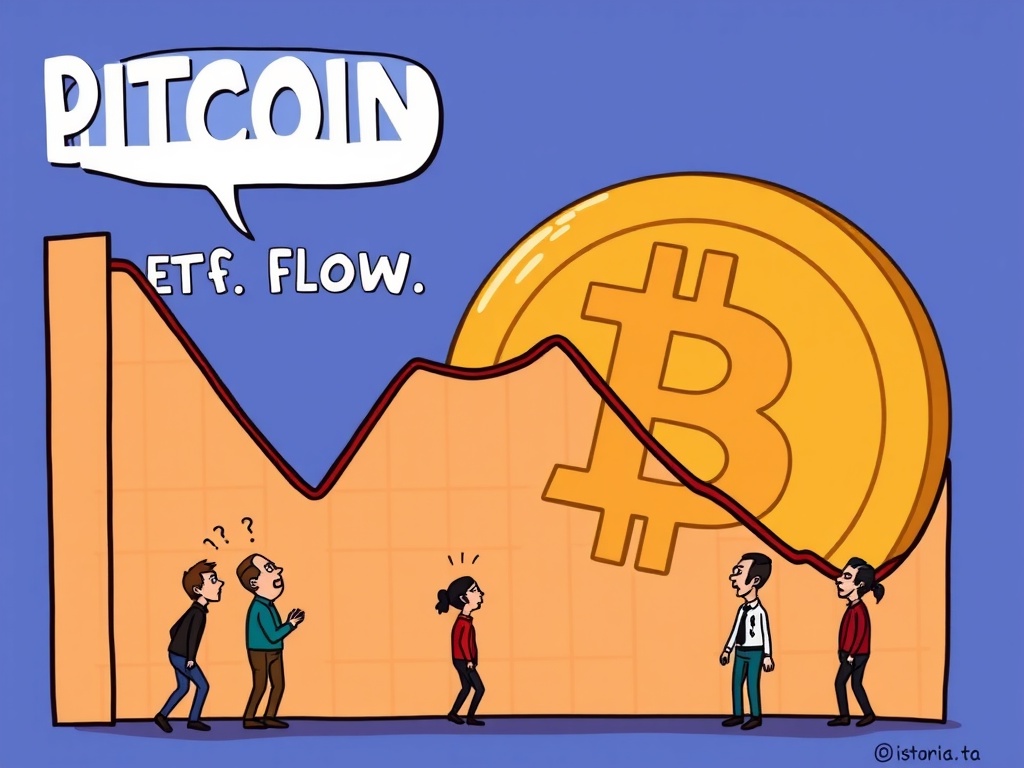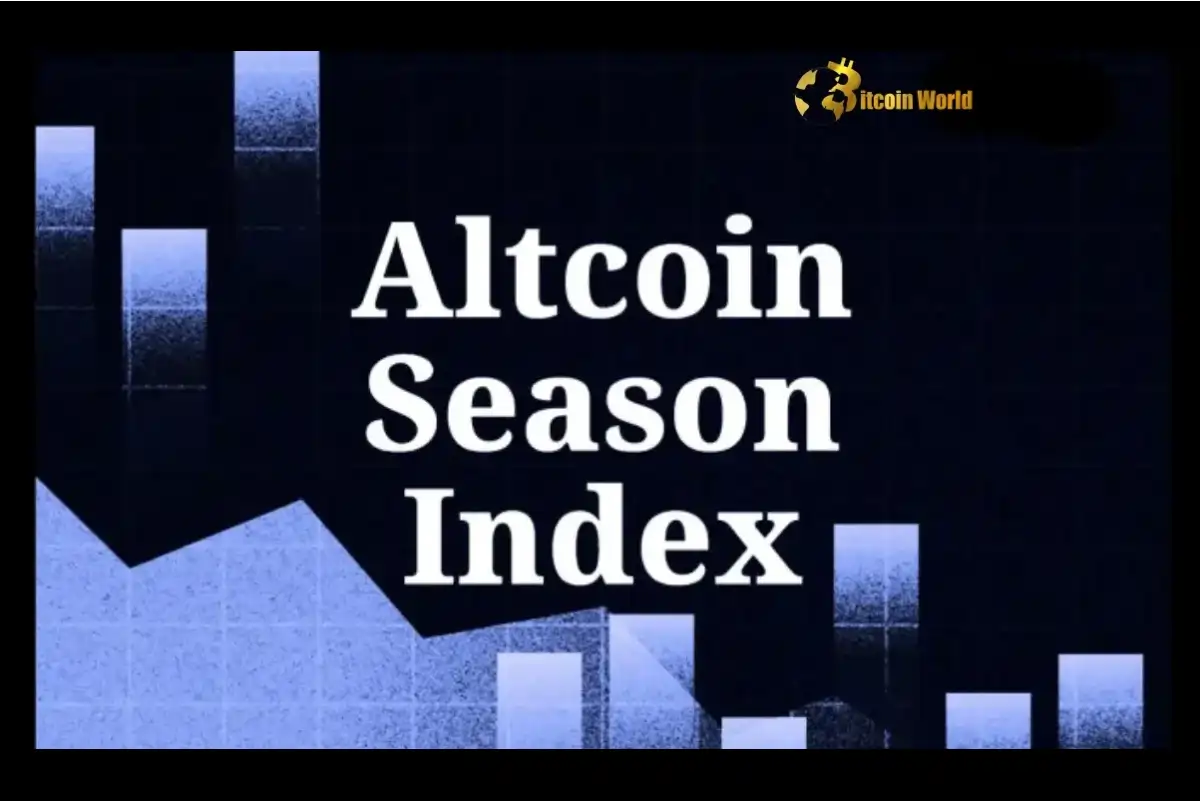BitcoinWorld

Bitcoin ETF Outflows: Unpacking the Crucial $14.02M Shift on August 15
The world of cryptocurrency investing is constantly in motion, and recent data has highlighted a significant shift within the landscape of U.S. spot Bitcoin ETFs. On August 15, these investment vehicles collectively experienced a net outflow, a development that caught the attention of many market observers. Understanding these movements is crucial for anyone tracking the evolving institutional interest in digital assets.
Unpacking the Latest Bitcoin ETF Outflows
Recent reports from Trader T on X revealed that U.S. spot Bitcoin ETFs recorded a total net outflow of $14.02 million on August 15. This figure, while not massive in the grand scheme of the crypto market, provides valuable insight into the daily ebb and flow of institutional and retail capital.
- Grayscale’s GBTC: This prominent fund saw significant outflows, totaling $81.82 million. GBTC’s movements often have a notable impact due to its size and history.
- ARK Invest’s ARKB: Following a similar trend, ARKB also reported outflows, amounting to $46.71 million for the day.
- BlackRock’s IBIT: In contrast to the outflows, IBIT posted a strong inflow of $114.51 million. This highlights continued demand for certain products even amidst overall net outflows.
The remaining spot Bitcoin ETF products largely maintained their holdings, showing no dramatic shifts on that particular day.
What Do These Bitcoin ETF Outflows Signify for Crypto ETF Performance?
When we observe Bitcoin ETF outflows, it is natural to question their underlying implications. These daily fluctuations are often a blend of various factors, including market sentiment, profit-taking by investors, and strategic rebalancing of portfolios. While a net outflow might seem concerning, it is important to consider the broader context.
For instance, the significant inflow into BlackRock’s IBIT suggests that capital is not necessarily leaving the Bitcoin ETF space entirely. Instead, it might be shifting between different products or finding new entry points. This dynamic demonstrates the maturing nature of the crypto ETF performance market, where different funds attract varying levels of investor confidence and liquidity. Analyzing these shifts is key to understanding overall crypto ETF performance trends.
Understanding these dynamics helps investors make informed decisions. It’s not just about the total net figure, but also about which specific funds are experiencing these shifts and why.
Navigating Spot Bitcoin ETF Investments: Key Insights
For investors looking at U.S. spot Bitcoin ETFs, daily net flows offer a snapshot, but long-term trends provide a clearer picture. Here are some actionable insights:
- Look Beyond Daily Volatility: A single day’s outflow, like the $14.02 million observed, does not necessarily indicate a sustained bearish trend. Market participants often adjust positions for various reasons.
- Monitor Individual Fund Performance: The contrasting movements of GBTC and IBIT underscore the importance of evaluating individual spot Bitcoin ETF products. Each fund has its own fee structure, liquidity, and investor base.
- Consider Broader Market Conditions: Bitcoin’s price action and the overall cryptocurrency market sentiment play a significant role in influencing ETF flows. These ETFs are inherently linked to the underlying asset.
- Diversify Your Portfolio: Relying solely on one type of investment can be risky. A balanced approach, considering other asset classes and investment strategies, is often prudent.
Ultimately, the performance of these ETFs reflects the ongoing evolution of institutional adoption and investor appetite for Bitcoin exposure through regulated financial products.
Conclusion: The Evolving Landscape of U.S. Spot Bitcoin ETFs
The $14.02 million net outflow from U.S. spot Bitcoin ETFs on August 15 serves as a reminder of the dynamic nature of the crypto investment landscape. While funds like Grayscale’s GBTC and ARK Invest’s ARKB saw outflows, BlackRock’s IBIT demonstrated robust inflows, highlighting a nuanced picture rather than a uniform exodus. These daily movements are part of a larger narrative concerning institutional engagement and the continuous maturation of the Bitcoin market. Investors should always conduct their own research and consider the broader context when interpreting such data points.
Frequently Asked Questions (FAQs)
Q1: What caused the $14.02 million net outflow from U.S. spot Bitcoin ETFs on August 15?
A1: The net outflow was a result of various factors, including significant outflows from Grayscale’s GBTC and ARK Invest’s ARKB, partially offset by substantial inflows into BlackRock’s IBIT. Daily market dynamics, investor rebalancing, and profit-taking likely contributed.
Q2: How do individual fund movements, like GBTC and IBIT, impact overall Bitcoin ETF outflows?
A2: Individual fund movements directly contribute to the overall net flow. Large outflows from one fund, even if another sees inflows, can still result in a net outflow for the entire sector, indicating shifts in investor preference or strategy across different spot Bitcoin ETF products.
Q3: Are Bitcoin ETF outflows a sign of declining institutional interest?
A3: Not necessarily. While some funds experienced outflows, others like BlackRock’s IBIT saw significant inflows. This suggests a reallocation of capital within the U.S. spot Bitcoin ETFs market rather than a complete withdrawal of institutional interest.
Q4: What should investors consider when interpreting daily spot Bitcoin ETF flow data?
A4: Investors should look beyond daily numbers and consider long-term trends, the performance of individual funds, broader market conditions, and their own diversification strategies. Daily flows are snapshots, not definitive indicators of sustained market direction.
Q5: How does crypto ETF performance relate to the broader crypto market?
A5: Crypto ETF performance is closely tied to the underlying cryptocurrency market, especially Bitcoin’s price. ETF flows can reflect investor sentiment towards Bitcoin and the digital asset space, and significant movements can sometimes influence market liquidity and sentiment.
Did you find this analysis helpful? Share this article with your network to help others understand the complex dynamics of Bitcoin ETF outflows and the broader crypto market!
To learn more about the latest crypto market trends, explore our article on key developments shaping Bitcoin institutional adoption.
This post Bitcoin ETF Outflows: Unpacking the Crucial $14.02M Shift on August 15 first appeared on BitcoinWorld and is written by Editorial Team





